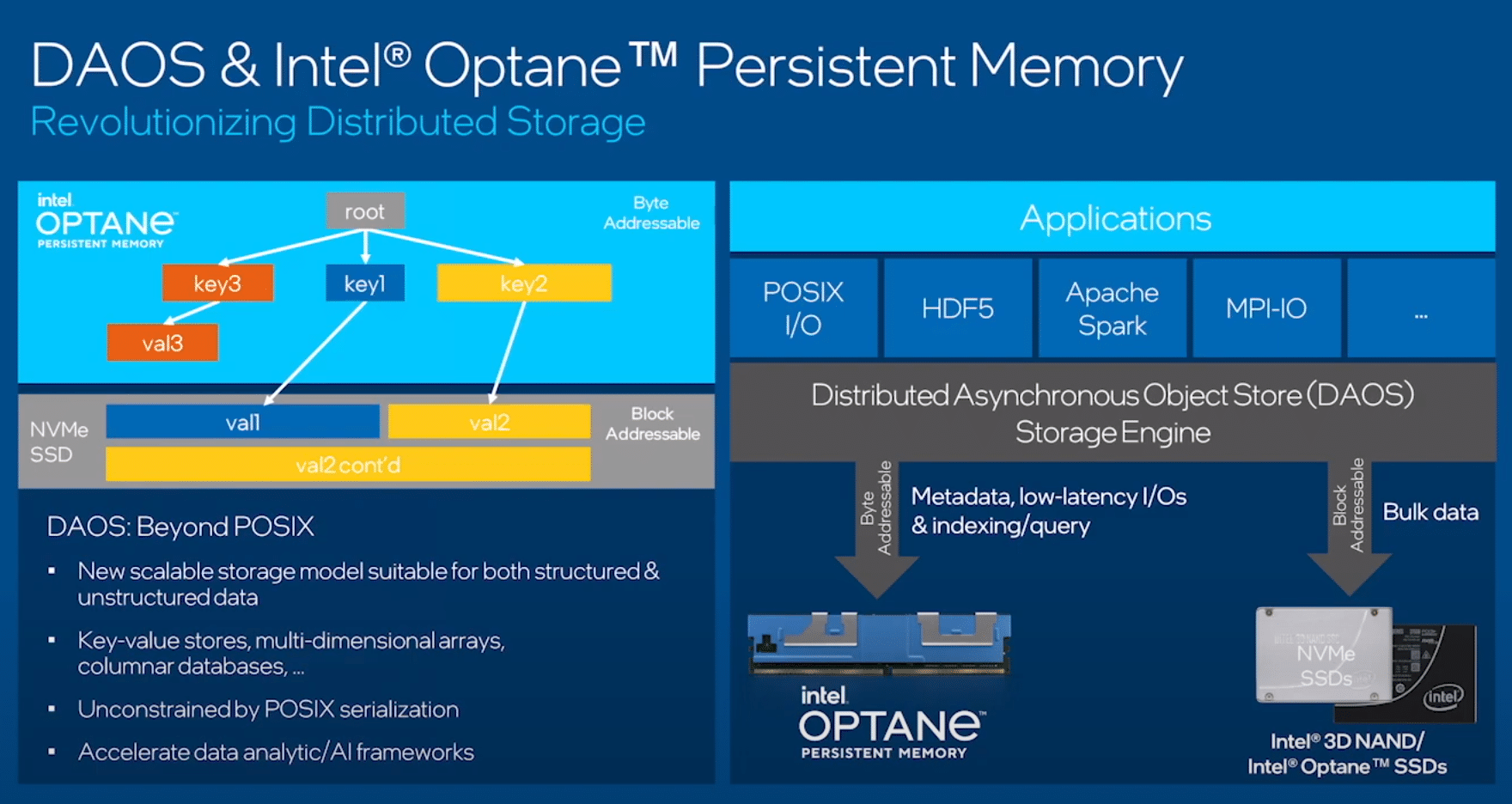During the Intel Memory and Storage Moment 2020, Intel shared performance numbers for the Optane persistent memory 200 series in a DAOS instance. These preliminary performance numbers are based on the 2nd Generation Intel Xeon Scalable architecture with Intel Optane PMem 100 Series vs. the Intel Optane PMem 200 Series running in brand new system design. DAOS showed an impressive 58% improvement in write bandwidth in upgrading to the next generation platform, with no optimizations to DAOS for the new hardware.
During the Intel Memory and Storage Moment 2020, Intel shared performance numbers for the Optane persistent memory 200 series in a DAOS instance. These preliminary performance numbers are based on the 2nd Generation Intel Xeon Scalable architecture with Intel Optane PMem 100 Series vs. the Intel Optane PMem 200 Series running in brand new system design. DAOS showed an impressive 58% improvement in write bandwidth in upgrading to the next generation platform, with no optimizations to DAOS for the new hardware.
Read More – Intel PMem 200 Review
There were several bottlenecks in the legacy storage solutions, but chief among these came from POSIX and block-based IO. Intel said that these storage software stacks’ fundamental limitations became visible later when much faster SSDs options came out. Intel Optane Persistent Memory (PMem) is an essential technology that DAOS builds upon, and DAOS is designed from the ground up for performance. There are no legacy layers in hardware, no legacy in software. Overall, new improvements show great promise for what the Intel Optane PMem 200 series will enable in performance for DAOS and many other applications.
The Distributed Asynchronous Object Storage (DAOS) is an open-source object store designed from the ground up for massively distributed Non Volatile Memory (NVM). This technology takes advantage of next-generation NVM technology, like Storage Class Memory (SCM) and NVM express (NVMe), while presenting a key-value storage interface on top of commodity hardware. It provides features, such as transactional non-blocking I/O, advanced data protection with self-healing, end-to-end data integrity, fine-grained data control, and elastic storage. These features help to optimize performance and cost.
There are multiple reasons for the importance of DAOS for Intel’s PMem. As Intel explains, PMem is used for the shared store of metadata information and a small I/O tier. Metadata access is of very low granularity and is just moving away from block storage to a cache line that simplifies its operations and needs to keep an active DRAM buffer. Small I/O, on the other end, is stored into PMem on writes, defined by the DAOS policy engine. Intel keeps revealing that this solution allows them to optimize bulk data writes to NVMe SSDs for better SSD performance and SSD endurance, also dependent on the write pattern. To their customers, this benefit can result in using less expensive grade SSDs, such as moving from high-endurance SSDs to mid-endurance or standard-endurance drives or even moving between technologies such as TLC-based NAND SSDs to QLC SSDs.
Read More – Intel PMem 200 Review
Engage with StorageReview
Newsletter | YouTube | Podcast iTunes/Spotify | Instagram | Twitter | Facebook | RSS Feed

